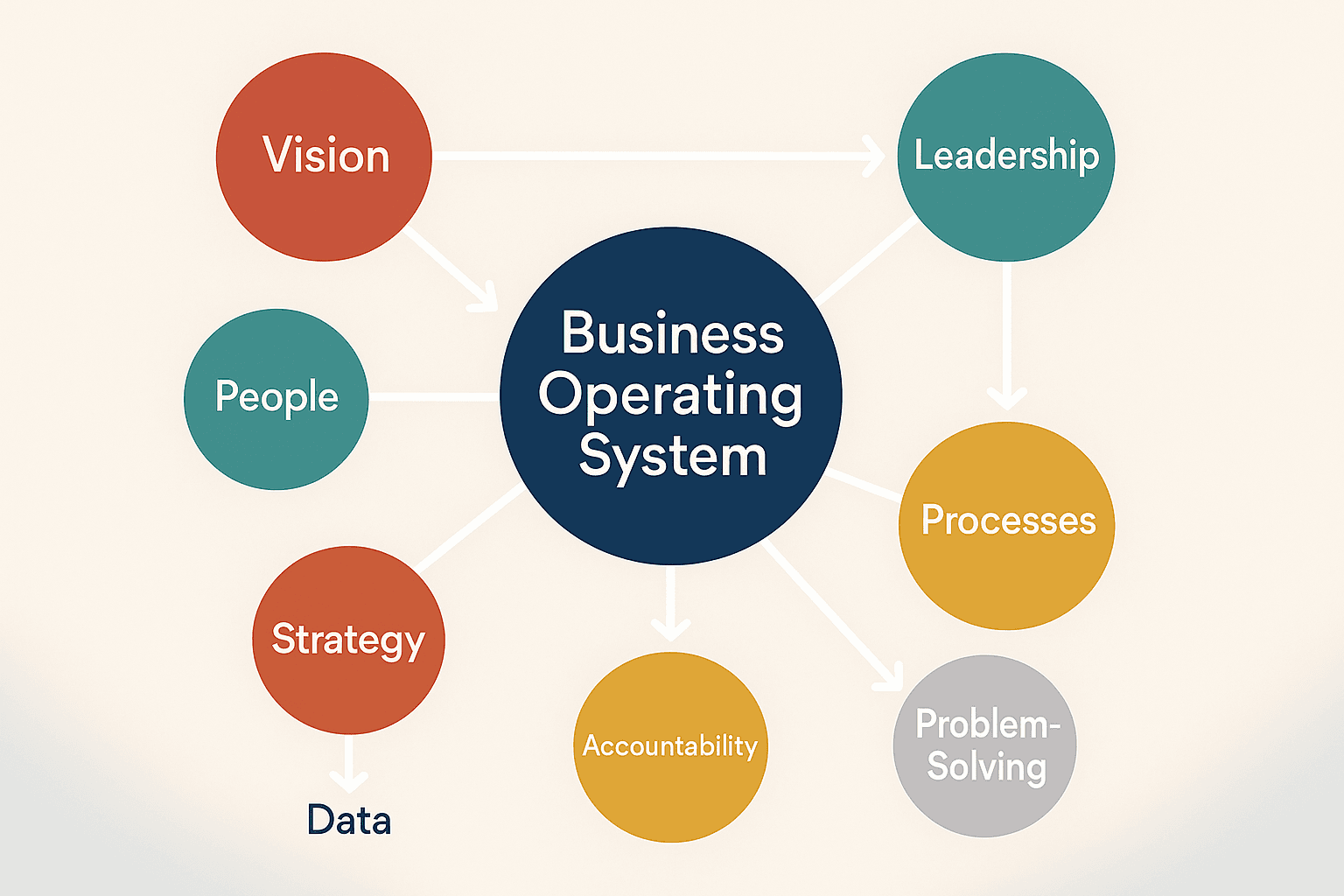What on Earth Is a Business Operating System (BOS)?
Business Operating System (BOS) Part 1
If you’ve ever felt like your company runs on sheer willpower — constant firefighting, misaligned priorities, or meetings that solve little, you’re not alone. Most growing businesses reach a point where grit and instinct aren’t enough. That’s where a business operating system comes in.
A business operating system (BOS) is the framework that connects your people, data, and operations so the company runs on structure instead of stress. It gives leadership teams a shared language and a repeatable rhythm to plan, measure, and execute — day after day, quarter after quarter.

Why It Matters
Growth adds complexity. Communication slows. Priorities blur. Everyone’s busy, but not always in sync.
A business operating system restores alignment and rhythm. It keeps everyone focused on what matters most — the vision, the numbers, and the next right step.
When I work with a client, one of my goals is to help them reach the point where their company can run itself through clarity, structure, and accountability. That’s what a strong operating system makes possible.
What It’s Built On
Every effective operating system rests on a few non-negotiables:
- Clarity of vision and purpose – Everyone knows where the company is going and why.
- Defined roles and leadership – No confusion about who owns what.
- Data-driven decision-making – Facts, not feelings, guide progress.
- Standardized processes – Work flows the same way every time, creating reliability.
- Disciplined problem-solving – Issues are surfaced, tracked, and resolved — not buried.
These elements create consistency and give teams confidence in how they operate.
Who It’s For
If you’re a founder trying to scale, a leadership team stretched thin, or an organization ready for its next phase, an operating system brings the structure you need. It helps manage complexity, reduce noise, and create a business that performs predictably — without losing its soul.
The Real Impact
When you install a business operating system, things start to shift:
- Meetings become shorter and more productive.
- Priorities stay clear and visible.
- Teams align around measurable goals.
- Growth becomes deliberate instead of chaotic.
It’s not theory — it’s a practical framework that turns good intentions into consistent execution.
What’s Next
Over the next few weeks, I’ll unpack three of the most widely used business operating systems in use today, each with its own strengths and approach. My goal isn’t to sell a model but to help you find the one that fits your company’s DNA.
Because when your foundation is solid, everything else — strategy, culture, growth — starts to click.
If you’re considering implementing a business operating system or want to understand how one could help your company scale, I'd be happy to share what’s worked for my clients — and what hasn’t.
---
Insights from Anwer Qureishi, Thought Leader & Entrepreneur
Ready to accelerate growth? Schedule a Consultation with Anwer Qureishi, Founder, Q&S International (ThinkQSi).
